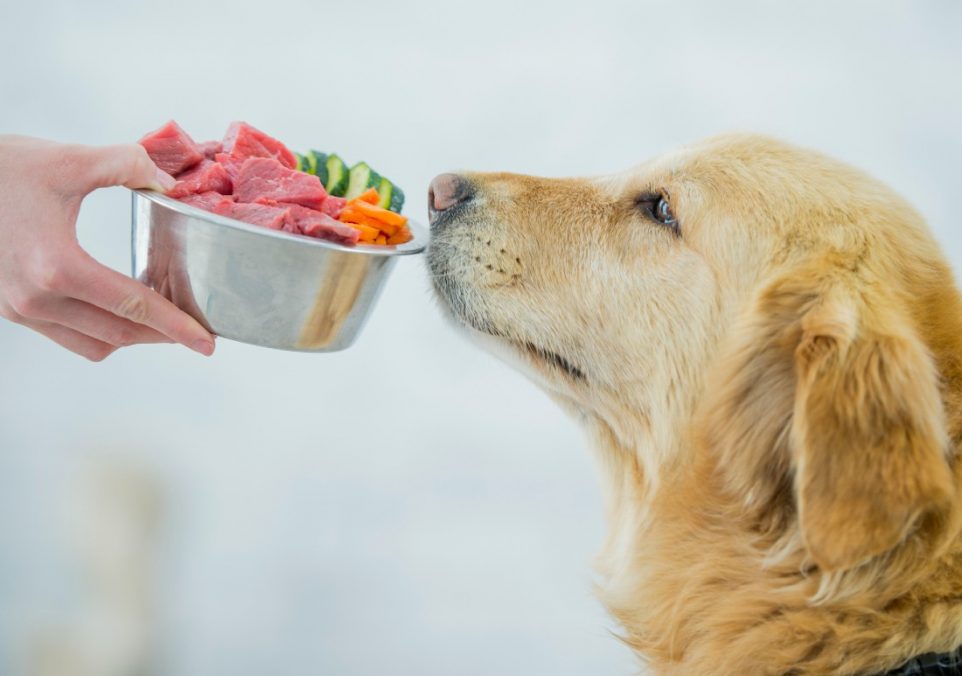Can Dogs Eat Spicy Food? The Dos and Don’ts of Feeding Your Pup Human Food

We all love giving our furry friends a little something extra now and then, but knowing what’s safe and what’s not is crucial. If you’ve ever been tempted to share some of your spicy food with your pup, you’re probably wondering if dogs can eat spicy food. The answer is complicated because it depends on the type and amount of spice in the food.
Are Spicy Foods Dangerous for Dogs?
Dogs generally have a more sensitive digestive system than humans, and they can’t handle spices the same way we do. While capsaicin, the compound that makes chili peppers hot, is not toxic to dogs, it can cause significant discomfort. Dogs that consume too much spicy food may experience pain and inflammation in their mouth, throat, and stomach. This can lead to symptoms like excessive drooling, panting, and even vomiting or diarrhea.
For instance, foods like pizza, tacos, curries, and chili con carne are popular dishes that contain spices such as cayenne pepper, chili powder, garlic powder, onion powder, paprika, and black pepper. If these spices are not removed or minimized, they can cause digestive issues for your dog. Additionally, certain spices like garlic and onion powder are toxic to dogs and should be avoided altogether.
A survey conducted by OnePoll on behalf of PetMeds found that 44% of pet owners are worried about their pets experiencing separation anxiety, and 52% have observed changes in their pets’ behavior. This anxiety can sometimes drive pets to eat things they wouldn’t normally touch, including spicy foods, so it’s essential to keep such items out of reach.
Safe Alternatives for Treating Your Dog
If you want to give your dog a special treat without the risk, there are plenty of safe alternatives. Homemade treats can be a great option. Sweet potato chews or carrot sticks seasoned with dog-safe spices like cinnamon or nutmeg are delicious and healthy alternatives to spicy foods. These options not only avoid the risks associated with spicy foods but also provide nutritional benefits.
You can also find gourmet dog treats on the market that are specially formulated to be safe for dogs. These treats often use low levels of meat-based seasonings and avoid high spice levels entirely. Always check the ingredients to ensure they don’t include any harmful spices or other toxic ingredients.
For example, making homemade dog biscuits using pumpkin or peanut butter can be a fun activity that results in a delicious treat for your dog. These ingredients are not only safe but also loved by most dogs. Adding a touch of cinnamon can provide a hint of flavor without the risks associated with spicy foods.
How Much Spicy Food Is Too Much for Your Dog?
As with any food, it’s essential to start with small servings to avoid overwhelming your dog’s digestive system. If you decide to let your dog try something slightly spicy, do so in moderation and watch for any adverse reactions. Remember, even small amounts of certain spices can cause discomfort or health issues for dogs.
For instance, if you occasionally give your dog a taste of your dinner, make sure it doesn’t contain any spices like garlic or onion powder, which are toxic to dogs. Even non-toxic spices can cause issues if consumed in large quantities. If your dog shows signs of distress such as excessive drooling, panting, or vomiting, it’s best to consult your veterinarian immediately.
It’s also important to be mindful of any pre-existing health conditions your dog may have. Dogs with gastrointestinal issues, allergies, or other health concerns should avoid spicy foods altogether. Instead, focus on providing treats that are known to be safe and beneficial for their specific health needs.
Safety Tips for Feeding Your Dog Human Food
When it comes to sharing human food with your dog, it’s crucial to be mindful of what and how much you’re feeding them. Always read labels and check ingredients to ensure there are no harmful spices or other toxic components. If your dog has allergies or health conditions, it’s best to avoid feeding them human foods that could trigger adverse reactions.
Monitor your dog closely for signs of overindulgence, such as excessive drooling or licking their lips frequently. If your dog seems uncomfortable or shows signs of distress, it’s best to stop feeding them that particular food and consult your veterinarian.
Finally, use moderation when introducing any new food into your dog’s diet. This allows their digestive system to adjust and helps prevent any adverse reactions. By being cautious and informed, you can ensure your dog enjoys a variety of safe and delicious treats without the risks associated with spicy foods.
Your Pet’s Best Interest, Always
At Pet Institute, we take pet care seriously. We're dedicated to transparency, impartiality, and the well-being of your pets in every article, review, and recommendation we provide. Our unwavering commitment to these principles ensures that you, our valued reader, always receive reliable and unbiased information. Let us be your trusted guide in the world of pet care and companionship.